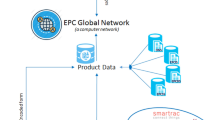Abstract
As a distributed ledger technology, the block-chain has gained much attention from both the industrical and academical fields, but most of the existing blockchain protocols still have the cubical dilatation problem. Although the latest Rollerchain has mitigated this issue by changing the blockheader’s contents, the low efficiency, severe capacity expansion and non-scalability problems still hinder the adoption of Rollerchain in practice. To this end, we present the pruneable sharding-based blockchain protocol by utilizing the sharding technique and PBFT(Practical Byzantine Fault Tolerance) algorithm in the improved Rollerchain, which has high efficiency, slow cubical dilatation, small capacity expansion and high scalability. Moreover, the pruneable sharding-based blockchain protocol is certifiably secure and scalable. The experimental results show the protocol has good performance.










Similar content being viewed by others
References
Judmayer A, Stifter N, Krombholz K, Weippl E (2017) Blocks and chains: introduction to bitcoin, cryptocurrencies, and their consensus mechanisms. Synthesis Lectures on Information Security Privacy, & Trust 9 (1):1–123
Anjum A, Sporny M, Sill A (2017) Blockchain standards for compliance and trust. IEEE Cloud Computing 4(4):84–90
Bruggeman J (2018) Consensus, cohesion and connectivity. Soc Netw 52:115–119
Guo B, Zhang D, Yang D (2011) Read more from business cards: Toward a smart social contact management system. In: IEEE/WIC/ACM international conference on web intelligence and intelligent agent technology, IEEE computer society, pp 384–387
Lin I-C, Liao T-C (2017) A survey of blockchain security issues and challenges. IJ Netw Secur 19(5):653–659
Gervais A, Karame GO, Wüst K, Glykantzis V, Ritzdorf H, Capkun S (2016) On the security and performance of proof of work blockchains. In: Proceedings of the 2016 ACM SIGSAC conference on computer and communications security. ACM, pp 3–16
Kreku J, Vallivaara VA, Halunen K, Suomalainen J (2017) Evaluating the efficiency of blockchains in iot with simulations, In: Proceedings of the 2nd international conference on internet of things, Lotbds, pp 216–223
Ruta M, Scioscia F, Ieva S, Capurso G, Di Sciascio E (2017) Semantic blockchain to improve scalability in the internet of things. Open Journal of Internet Of Things (OJIOT) 3(1):46–61
Chepurnoy A, Duong T, Fan L, Zhou H-S (2017) Twinscoin: a cryptocurrency via proof-of-work and proof-of-stake. IACR Cryptology ePrint Archive 2017:232
Kiayias A, Konstantinou I, Russell A, David B, Oliynykov R (2016) A provably secure proof-of-stake blockchain protocol. IACR Cryptology ePrint Archive 2016:889
Evans JD, Kessler RR (1992) Dpos: a metalanguage and programming environment for parallel processing. Lisp and symbolic computation 5(1-2):105–125
Nakamura J, Araragi T, Masuzawa T, Masuyama S (2014) A method of parallelizing consensuses for accelerating byzantine fault tolerance. IEICE Trans Inf Syst 97(1):53–64
Driscoll K, Hall B, Sivencrona H, Zumsteg P (2003) Byzantine fault tolerance, from theory to reality. In: Computer safety, reliability, and security, 22nd international conference, vol 3. Springer, pp 235–248
Oom Temudo de Castro M (2002) Practical byzantine fault tolerance. ACM Trans Comput Syst 20(4):398–461
Chepurnoy A, Larangeira M, Ojiganov A (2016) Rollerchain, a blockchain with safely pruneable full blocks. arXiv:1603.07926
Eyal I, Gencer AE, Sirer EG, van Renesse R (2016) Bitcoin-ng: a scalable blockchain protocol. In: 13th USENIX symposium on networked systems design and implementation, pp 45–59
Cattell R (2011) Scalable sql and nosql data stores. ACM Sigmod Record 39:12–27
Glendenning L, Beschastnikh I, Krishnamurthy A, Anderson T (2011) Scalable consistency in scatter. In: Proceedings of the 23rd ACM symposium on operating systems principles. ACM, pp 15–28
Park JH, Park JH (2017) Blockchain security in cloud computing: use cases, challenges, and solutions. Symmetry 9(8):164
Chen D, Zhao H (2012) Data security and privacy protection issues in cloud computing. In: Computer science and electronics engineering (ICCSEE), vol 1, IEEE, pp 647–651
Kraft D (2016) Difficulty control for blockchain-based consensus systems. Peer-to-Peer Netw Appl 9(2):397–413
IBM (2017) Hyperledger https://www.hyperledger.org/projects/fabric/
Acknowledgements
This work was supported by the Major Nature Science Foundation of China (No. 61370078, No. 61309016), the National Natural Science Foundation of China (No. 61702404), the China Postdoctoral Science Foundation Funded Project (No. 2017M613080), the Fundamental Research Funds for the Central Universities (No. JB171504).
Author information
Authors and Affiliations
Corresponding author
Additional information
Publisher’s Note
Springer Nature remains neutral with regard to jurisdictional claims in published maps and institutional affiliations.
Rights and permissions
About this article
Cite this article
Feng, X., Ma, J., Miao, Y. et al. Pruneable sharding-based blockchain protocol. Peer-to-Peer Netw. Appl. 12, 934–950 (2019). https://doi.org/10.1007/s12083-018-0685-6
Received:
Accepted:
Published:
Issue Date:
DOI: https://doi.org/10.1007/s12083-018-0685-6




